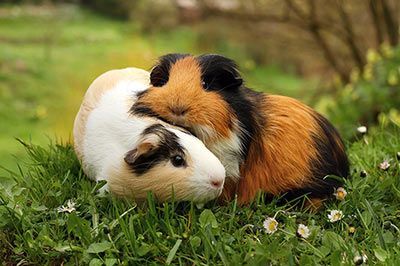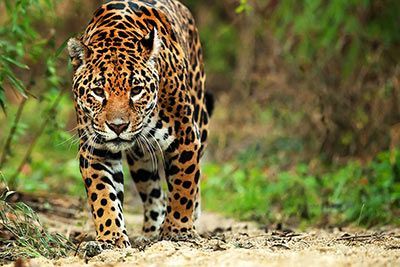Dog
Dog Facts
| Size | 7-27.5 inch (18-70 cm) |
| Speed | Up to 43 mph (70 km/h) |
| Weight | 1.1-154 lb (0.5-70 kg) |
| Lifespan | 10-13 years |
| Food | Carnivore |
| Predators | - |
| Habitat | Everywhere in the world |
| Order | Carnivore |
| Family | Dogs |
| Scientific name | Canis lupus familiaris |
| Characteristics | Evolutionarily related to the wolf |
Main Characteristics
About 10,000 years ago, wolves joined the humans because they allowed them to feed on their delicious food leftovers. Several hundred small and large dog species originate from the wolf.
Dogs as Pets
Do you want a dog? In our pet section you will find detailed profiles for 32 dog breeds that are suitable for beginners and families with children.
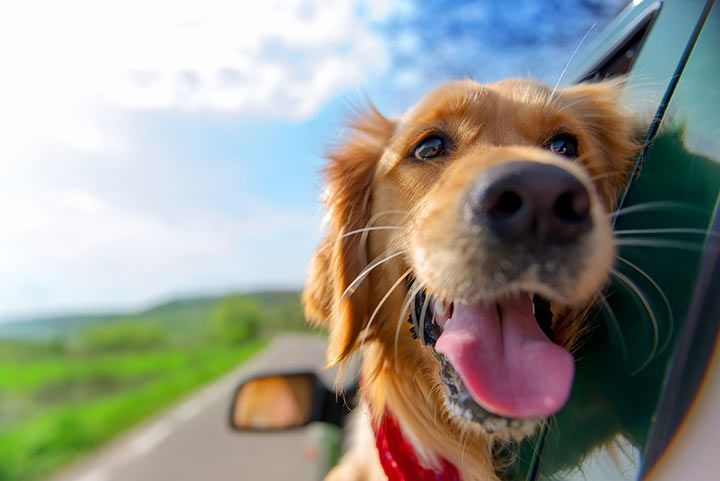
Anatomy and Appearance
Size and Weight
The largest dog breed is the Great Dane. It can reach up to 34 inches (86 cm) tall and weigh more than 200 pounds (90 kg). The smallest dog breed is the Chihuahua. It is only 6 inches (15 cm) tall and weighs 3.3 to 6.6 pounds (1.5 to 3 kg).
Eyes
Dogs have a thin layer of tissue behind the retina called the tapetum lucidum (Latin for "luminous carpet"). It reflects incoming light back into the eyes, improving vision in the dark. It is like a kind of mirror and makes their eyes glow at night when light hits them.
Teeth
Dogs have 42 teeth. In the upper and lower jaw there are each three incisors, one canine and four molars on the left and the right. There is something special about the molars: the third to last is a particularly strong tooth, which is referred to as a fang.
Coat
The coat protects from cold, injuries and drains water. There are five types: stock hair (Husky, German Shepherd), short hair (Labrador Retriever), long hair (Cocker Spaniel), curly hair ( Poodle) and wire hair (Schnauzer). Dogs have a top coat and some do also have an undercoat. It starts to grow in autumn to protect against the cold in winter. In spring, when it starts to get warmer, the undercoat will be shed.
Nose
A dog's nose is as unique as a human's fingerprint. It has distinctive ridges and creases. We humans don't like it when our noses are wet. But this is very important for four-legged friends. They can smell better, when it is wet, because the scent particles floating through the air stick better to moist surfaces.
Ears
Their ears are very flexible, so they can quickly turn them in the direction of sounds.
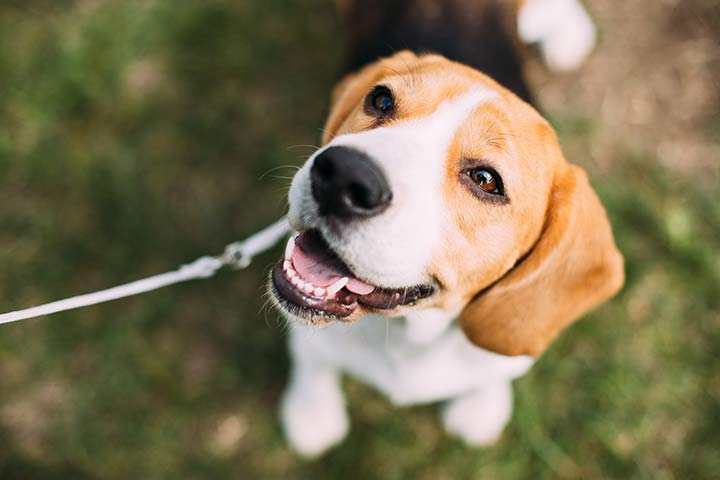
Diet
Dogs are not 100% carnivores – like their ancestors. It is true that wolves are meat eaters, but they eat roots, leaves, grass and fruit, too. That is why wolves and dogs are actually omnivores. According to recent studies, dogs that aren't exclusively fed meat are healthier. The oldest dog on a vegetarian diet lived to be 27 years old.
Life Expectancy
Their life span depends on their health, but also on the breed and the size. Large and heavy dogs rarely live longer than nine years. Small, slender ones can live to be over 15 years old. The oldest dog is currently "Bobi" (March 2023). He is over 30 years old and a shepherd dog of the Portuguese breed "Rafeiro do Alentejo".

Senses and Abilities
Sense of Smell
Dogs have an exceptionally good sense of smell. They have up to 300 million olfactory cells, while humans only have five million. That is why they are often used as sniffing dogs. The University of Adelaide (Australia) has found that the animals even can smell objects or people up to 20 km away. If trained, they can even smell diseases in humans.
Sense of Hearing
Dogs have an excellent sense of hearing. They hear lower and far higher tones than we humans. While dogs hear frequencies (pitches) between 15 and 50,000 Hz, humans only hear between 20 and 20,000 Hz. "Hz" is short for hertz, which is the mathematical unit for frequency. Our four-legged friends can even hear us calling at a distance of 3,300 feet (1 km). If they don't play deaf... ;)
Sense of Sight
Overall, dogs don't have a good sense of sight. They see blue and yellow best. Since they lack the photoreceptor cells for red, they see gray instead. At 240°, their field of vision is larger than that of humans, which only has around 180°. However, a dog can only see three-dimensionally in a range of 60°. With us humans it is 120°. Another difference is that the animals are particularly good at perceiving movements. They can't see things that aren't moving very well.
Facial Expressions
Dogs have more than 100 facial expressions. The ears play an important role in them. No doubt, at least 99 looks say: “Uh, I’m so hungry! Please give me a treat!”.
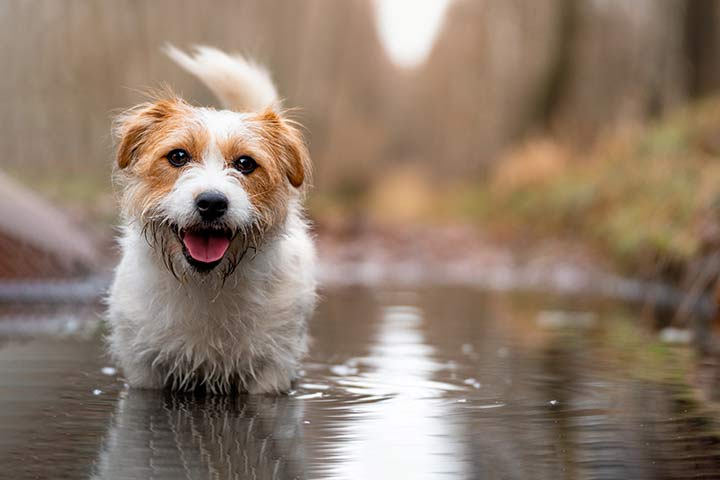
Behavior
Barking
The dog descended from the wolf, but while the wolf howls, it barks instead. Why? Wolves mainly howl, but they also bark on rare occasions. Scientists believe that dogs evolved barking as an adaptation to humans. They do it because they:
- are nervous
- are scared
- want attention
- are frustrated
- want to scare off someone or defend themselves
Most often they bark because they want attention. By the way: There is a breed of dog that neither howls nor barks, but yodels. Its name is Basenji.
Sweating
Dogs cannot sweat through their skin like humans. Instead, they sweat over the pads under their paws. This is where their sweat glands are. They also pant to cool off. They breathe in cool air and let the warm air out of their bodies.
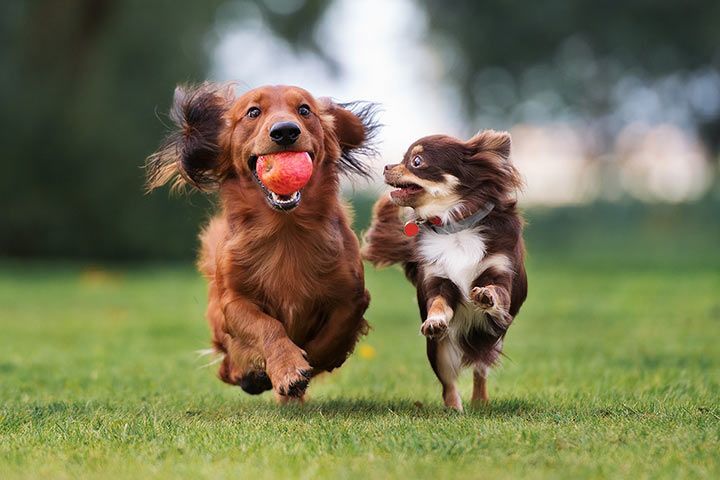
Records
The heaviest dog was the eight year old Great Dane Zorba in 1989 with 341 pounds (155 kg). A two year old Yorkshire terrier was the smallest dog weighing only 0.2 pounds (100 grams).
Fun Facts
Paw Preference
Dogs can be right- or left-pawed.
Life Savers
Dogs have incredible capabilities. If trained accordingly, they can recognize epileptic fits (= convulsive fits) of humans in time or, like the Saint Bernard Barry at the beginning of the 19th century, save people buried by an avalanche.
Even small dogs can become heroes if their owner is in danger. The Yorkshire terrier Oliver weighed 12.1 pounds (5.5 kg) and defended an elderly woman against a Japanese Akita weighing 79.3 pounds (36 kg). This is similar to a human weighing 165.3 pounds (75 kg) and fighting against a 1,080 pounds (490 kg) opponent.
There is hardly any limit to the loyalty of dogs: The German Shepherd Orient guided his blind owner for 2,112 miles (3,400 km) along the Appalachian Trail in the USA.
The Dog Is Related To:
- Coyote
- Jackal
- Wild Dog
- Wolf
Animals in the Same Biome:
- Coyote
- Jackal
- African Wild Dog
- Wolf
Featured Posts:
- Dog Breeds (Pet Section)
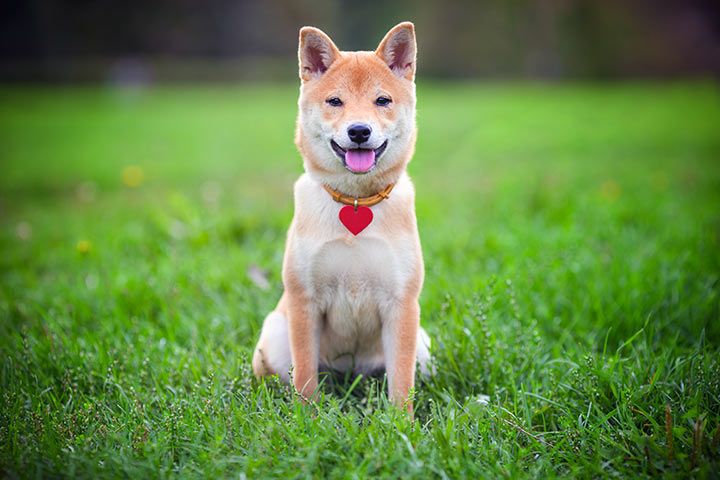
- Dog Quiz















